- Home
- William Shakespeare
The Sonnets and Other Poems Page 2
The Sonnets and Other Poems Read online
Page 2
It is probable that Shakespeare began composing sonnets soon after writing Venus and Adonis. Several poems in the form are woven into Romeo and Juliet and Love’s Labour’s Lost, plays that he wrote soon after the theaters reopened in 1594. The testimony of Francis Meres provides firm evidence that others were circulating in manuscript by 1598. But the collection entitled Shakespeare’s Sonnets was not published until 1609. We know neither whether it was authorized nor whether its arrangement of the sequence was purposeful. Some of the sonnets, however, clearly belong together as pairs or groups, in that successive poems sometimes allude to each other or enact variations on a similar theme.
Though we cannot necessarily trust the order in which the sonnets appear in the 1609 volume, there does seem—as one would expect from the hand of the dramatist—to be a plotline running through the sequence and a “character” to each of the personae. The first 126 poems appear to be written to a man or conceivably a succession of men. The narrative extends over a considerable period of time and runs a full gamut of emotions. The person addressed is younger than Shakespeare and of higher rank. He is lovely and the image of his mother: “Thou art thy mother’s glass and she in thee / Calls back the lovely April of her prime.” The first seventeen poems are exhortations to breed, in the manner of Venus’ address to Adonis: “From fairest creatures we desire increase, / That thereby beauty’s rose might never die.” There is then a modulation toward the idea that the poet’s own work of praise may enable the young man to escape the ravages of time and death. Some sort of relationship is then imagined, with the youth in a position of power and the poet in one of supplication. Absence, travel, “disgrace,” melancholy, estrangement and reunion are variously implied. The young man appears to have an affair with the poet’s mistress, thus abusing the bond of friendship. But he is eventually forgiven: “Take all my loves, my love, yea, take them all: / What hast thou then more than thou hadst before?” Later, the poet is discomposed by a rival who claims to have been taught by spirits to write “Above a mortal pitch” and who, with “the proud full sail of his great verse,” wins the patronage of the fair youth. The sequence ends with its key motif of the battle between love and time. The final poem to the youth is two lines short of the sonnet form’s customary fourteen. It ends with a pair of empty brackets, signaling some kind of closure or lacuna.
Sonnets 127–52, by contrast, explore the poet’s relationship with a mistress, a dark-complexioned and sexually voracious woman who has “raven black” brows. Sometimes her dark beauty is wittily defended against the blond Elizabethan ideal, but more frequently these poems are filled with self-abnegation, misogyny, a lingering sense of the sour taste that comes after sex, and disgust at the way in which the body rules the spirit. The woman is accused of infidelity, including an apparent affair with the “man right fair” who is the poet’s “better angel”—this seems to allude back to the purported relationship between “friend” and “mistress” in the earlier sequence. Some of the “dark lady” poems are searingly honest about the deceptions that may occur between lovers: “O, love’s best habit is in seeming trust…Therefore I lie with her and she with me, / And in our faults by lies we flattered be.” Others are dazzlingly playful, notably 135–36, with their multiple punning on senses of the word “Will,” including a persistent play on Shakespeare’s own name. The final two sonnets are imitations of a Greek epigram about the fire of love being quenched in a cool well, with clear allusion to the Elizabethan custom of taking mercury baths as a cure for syphilis. The implicit suggestion is that the poet has been venereally infected by the “dark lady.”
The surviving documentary evidence about Shakespeare’s life is not very exciting. Beyond the bare facts of birth, marriage, parenthood, and death recorded in parish registers, most of the surviving papers are legal and financial documents: real estate transactions, records of his shareholding in his theater company, payments for performances at court, a steady stream of minor litigation. Not the sort of thing to reveal the heart and soul of the artist. What we know about the life does not help us to understand the greatness of the work. At the same time, since plays are plays, in which feelings and opinions belong to the characters and not the author, the dramatic works cannot be used as reliable evidence of the nature of the man. Indeed, one of the things most valued about Shakespeare is what John Keats called his lack of “personality”: his ability to mask his own face, to dissolve himself into his characters, to be now Othello and now Iago, now Prince Hal and at the same time Falstaff.
Shakespeare’s sonnets are a source of endless biographical fascination because they seem to be the one work in which he speaks in his own voice. “Scorn not the sonnet,” William Wordsworth would write two centuries later: “With this key, Shakespeare unlocked his heart.” So it is that the sonnets are often believed to bear a wholly different relationship to Shakespeare’s biography from that of the rest of his literary work. There is, however, no intrinsic reason why a sonnet—a highly artificial literary form—should not be a dramatic performance just as a play is. It may perfectly well be argued that for an Elizabethan poet to dash off a sequence of sonnets was a kind of exercise, a proof of artistic skill akin to the work of a composer writing a set of variations on a musical theme. If Shakespeare could imagine Hamlet and Romeo and Viola, he could also have invented the “plot” and “characters” of his sonnets. Robert Browning responded to Wordsworth’s claim: “If so, the less Shakespeare he!” Maybe the sonnets are best read as assays of Shakespeare’s art, demonstrations of the gift of seemingly effortless facility that the Italian theorist of courtship Baldassare Castiglione called sprezzatura: “A singer who utters a single word ending in a group of four notes with a sweet cadence, and with such facility that he appears to do it quite by chance, shows with that touch alone that he can do much more than he is doing.”
We do not know whether the sonnets are dramatic performances written out of sheer sprezzatura or poetic reimaginings of real figures and events. Unlike several contemporary sonneteers, Shakespeare does not name names. Because he is so guarded, the circumstances of composition have provoked centuries of speculation. The young man to whom the bulk of the poems are addressed may or may not be synonymous with the mysterious “Mr. W. H.” named in the collection’s dedication. The traditional candidates for the role of addressee are the Earl of Pembroke and the Earl of Southampton, though neither of them was a “Mr.” A provocative case has been made for the possibility that “Mr. W. H.” is actually a misprint for “Mr. W. S.” and that in the dedication Thomas Thorpe, the publisher, is merely acknowledging Shakespeare as the “only begetter” of the sonnets (“begetting” was a common metaphor for authoring).
Dozens and dozens of male Elizabethan poets wrote sonnet sequences, but only Shakespeare and Richard Barnfield addressed their poems explicitly to a man. Barnfield wrote in the explicitly homoerotic tradition of ancient Greek pastoral poetry, whereas Shakespeare’s sequence emphasizes the spiritual aspects of the poet’s love for the fair youth. The only sonnets in the collection where “Will” is actually in bed with a lover are addressed to the dark lady. The young man’s “thing” (which has been “pricked out” by nature) is, says the poet in Sonnet 20, “to my purpose nothing”—though this is supremely ambiguous, since it could mean either that he is not interested in a physical relationship or that the prick serves him in the same way as a woman’s “nothing” (vagina). Taken in their entirety, the sonnets associate heterosexual desire with consummation and disgust, homoerotic attraction with spirituality and an intensity that derives in large measure from the impossibility of consummation. Tempting as it may be to infer Shakespeare’s sexuality from this duality, it might be better to read the opposition between dark lady and fair youth as a dramatic device: one is a “character” representing desire in its sexual manifestation, the other in its idealizing and spirituality.
From the Earl of Surrey’s profession of love for a certain “Geraldine” through the identification
of Sir Philip Sidney’s “Stella” as Lady Penelope Rich, sixteenth-century readers were tantalized with the question of whether love poetry was an exercise of the wits—in imitation of Virgil or Petrarch or Sidney—or whether there was a real-life story behind a sonnet sequence and, if there was, what was the identity of the players. Some poets positively relished leaving all possibilities open. Giles Fletcher tried to have it both ways in the title of his collection of 1593: Licia, or Poems of love in honour of the admirable and singular virtues of his lady, to the imitation of the best Latin poets. Imitations of the best classical examples, but also addressed to a specific lady.
And was he really in love? A prefatory address to the reader explains that:
for this kind of poetry wherein I wrote, I did it only to try my humour: and for the matter of love, it may be I am so devoted to some one, into whose hands these may light by chance, that she may say which thou now sayest (that surely he is in love), which if she do, then have I the full recompense of my labour, and the poems have dealt sufficiently for the discharge of their own duty.
So Giles Fletcher may just be “trying his humour,” persuading you by his art that he is in love when actually he is not. Or he may really be in love, though if he is in love, it may only be a matter of chance if the poems fall into the hands of the person he loves. His pose is that he does not care whether they do or not. What he really wants to do is show you, the reader, how clever he is.
And the identity of his beloved?
If thou muse what my LICIA is, take her to be some Diana, at the least chaste, or some Minerva, no Venus, fairer far; it may be she is Learning’s image, or some heavenly wonder, which the precisest may not mislike: perhaps under that name I have shadowed Discipline. It may be, I mean that kind courtesy which I found at the patroness of these poems; it may be some college; it may be my conceit, and portend nothing.
Fletcher’s watchwords are “if” and “may be.” His refusal to explain himself is a key element of his self-conscious art. Who is Licia, what is she? Perhaps a goddess, perhaps a mortal, perhaps an allegory of Learning or intellectual Discipline, perhaps a patroness, perhaps a college, perhaps nothing.
Fletcher’s refusal to unshadow Licia’s identity should be remembered by everyone who tries to decode Shakespeare’s sonnets. It may be granted that we would be on fairly safe ground in assuming that Shakespeare’s dark lady is not an allegorical representation of “a college” (he wasn’t, unlike most contemporaneous sonneteers, a university man), but we cannot rule out the possibility that she is not so much a real person as an embodiment of Venus. Or that she is Shakespeare’s conceit and portends nothing beyond her reality in the text itself.
So too with the “fair youth” who seems to be the addressee of most of Shakespeare’s sonnets. He does not have to be a real person. He may be a figuration of a patron, ideal or real. Or he may be an earthly shadowing of Adonis or an imitation of Alexas, the lovely boy addressed in one of the most influential poems of classical antiquity, Virgil’s second Eclogue. The climactic sonnet in Shakespeare’s sequence to his beautiful young “friend” begins “O thou, my lovely boy,” which is a translation of Virgil’s “O formose puer.”
Shakespeare, alas, left no reader’s guide to the sonnets. If he had done so, it would probably have been as enigmatic and mischievous as that of Giles Fletcher.
OTHER POEMS
The extraordinary commercial success of Venus and Adonis, together with Shakespeare’s increasing celebrity as a playwright and the knowledge that he had been circulating “sugared sonnets among his private friends,” led the publisher William Jaggard to produce in late 1598 or early 1599 a tiny volume of twenty sonnets and songs called The Passionate Pilgrim By W. Shakespeare. Jaggard had obtained manuscript versions of two of Shakespeare’s best and most characteristic sonnets (one on the duplicities of love, the other contrasting the fair youth and the dark lady). He began his volume with them, then filled it up with poems from the sonnet-smattered comedy of Love’s Labour’s Lost and a variety of other sources. Cleverly, he included several sonnets that, though not Shakespearean, were clearly inspired by Venus and Adonis—readers could easily be led to imagine that these accomplished little gems were by Shakespeare. The Passionate Pilgrim includes several poems that were unquestionably by other authors and some of unknown authorship. It is fascinating testimony both to Shakespeare’s popularity by the end of the 1590s and to the way in which Elizabethan publishers and readers were more relaxed than we are about questions of attribution and authorial property.
Shakespeare must have composed a body of occasional poetry, in the form of either commissioned work or prologues and epilogues for particular theatrical performances. Many short poems of the period have been attributed to him at one time or another, but in only two cases is the attribution secure. One is a beautifully turned epilogue or prayer that meditates on time in an address to Queen Elizabeth at the end of a court performance in February 1599, which remained unknown in manuscript until the late twentieth century. The other is the mysterious poem that has become generally known as “The Phoenix and Turtle” (though Shakespeare did not give it a title).
In 1601, a minor author called Robert Chester published a long allegorical poem entitled Love’s Martyr. It begins with a council of the gods “in the high Star-chamber” (i.e. the cosmos, but also the seat of English government). They debate about what to do now that the phoenix (who is, unusually, female) is growing old and has no heir: “This Phoenix I do fear me will decay, / And from her ashes never will arise / An other Bird her wings for to display, / And her rich beauty for to equalize.” The parallel with the aged and sick virgin Queen Elizabeth is all too obvious. Chester’s phoenix then accepts the devoted courtly service of a turtledove. He agrees to die in fire with the phoenix, to be “A partner in this happy Tragedy,” in the hope that from the ashes of the two bodies “may spring one name.” In the closing section of the poem the rhythm changes to trochaic tetrameter as the phoenix and turtle are imagined as emblems of what Shakespeare calls “married chastity.” Chester’s conclusion imagines a new phoenix being born from this asexual union. The poem seems to be a fantasy of a smooth royal succession, achieved through the loyalty of Elizabeth’s male courtiers (but without biological conception of an heir, the queen now being far too old for that). The poem was dedicated to John Salusbury of Llewenni, Denbighshire, and seems to have been printed in honor of his being knighted by the queen in June 1601. Salusbury is therefore a prime candidate for the role of the turtledove, though the latter may equally well be regarded as a generic loyal courtier. It is hard to imagine Chester’s phoenix as anything other than a symbol for Queen Elizabeth. She was often so portrayed and, what is more, the phoenix was the symbol of her mother’s family, the Bullens (Boleyns)—throughout her life she wore a signet ring that opened to reveal images of Anne Bullen and a phoenix.
When Chester’s poem was published it was accompanied by “Diverse Poetical Essays on the Former Subject; viz. The Turtle and Phoenix,” also dedicated to Salusbury and dated 1601. One of these poetical essays, beginning “Let the bird of loudest lay” and written in a much more adept trochaic tetrameter than Chester’s, was signed William Shakespeare and is unmistakably in his style. The poem seems to be a response to the closing sequence of Chester’s: it imagines a group of birds at the funeral of the phoenix and turtle. Again, the phoenix seems to be Elizabeth, the turtle a loyal subject: “Distance and no space was seen / ’Twixt this turtle and his queen.” But “Distance and no space” is more than a metaphor for the combination of propriety and loyalty required by good courtiership. It is also a metaphysical conundrum. On being invited (and presumably paid) to contribute to Chester’s volume, Shakespeare took the opportunity to rework the union of phoenix and turtle as a philosophical tour de force instead of a piece of routine poetic flattery. A line such as “Either was the other’s mine” may allude back to a lengthy and tedious section of Chester’s poem concerning different kinds of mi
ning, but it works primarily as a brilliant pun on the exchange of selfhood that is the core of true love. Whereas Chester’s ambition was to gain or retain Salusbury’s patronage, Shakespeare rose above the occasion and indulged a vein of serious intellectual play of a kind much closer to the dazzling mind-bending of John Donne.
The mythical phoenix, which regenerates from its own ashes. © Bardbiz Ltd.
Around this time Shakespeare also wrote Twelfth Night, with its learned allusions to Pythagoras and its perspectival drama of twinning. Fascinated by the oxymoron of two becoming one, he turned the union of phoenix and turtle into an emblem of how “Beauty, truth and rarity” can confound “reason” and “property.” The latter word simultaneously means ownership, propriety or decorum, and the philosophical principle that particular qualities inhere in one entity alone. “Single nature’s double name, / Neither two nor one was called”: these paradoxes are akin to some of the key enigmatic utterances in the plays, such as Iago’s “I am not what I am” and the talk in A Midsummer Night’s Dream of seeing “with parted eye, / when everything seems double.” “Neither two nor one” could serve not only as an epitaph for the phoenix and the turtle, but also as an epigraph for the double vision that shapes Shakespeare’s dramatic universe.

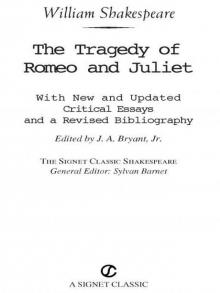 Romeo and Juliet
Romeo and Juliet As You Like It (Folger Shakespeare Library)
As You Like It (Folger Shakespeare Library)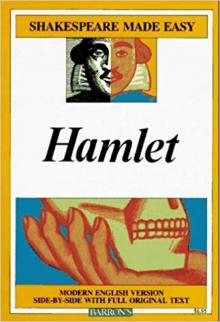 Hamlet
Hamlet Richard II (Folger Shakespeare Library)
Richard II (Folger Shakespeare Library)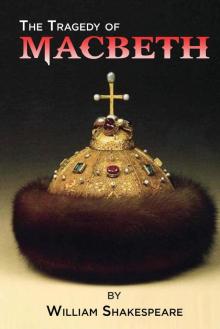 Macbeth
Macbeth Henry V
Henry V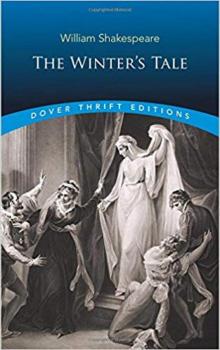 The Winter's Tale
The Winter's Tale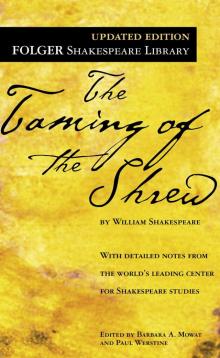 The Taming of the Shrew
The Taming of the Shrew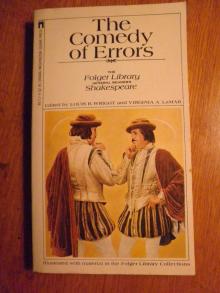 The Comedy of Errors
The Comedy of Errors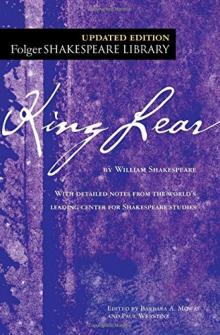 King Lear (Folger Shakespeare Library)
King Lear (Folger Shakespeare Library)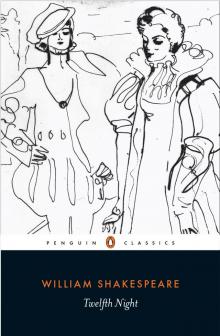 Twelfth Night
Twelfth Night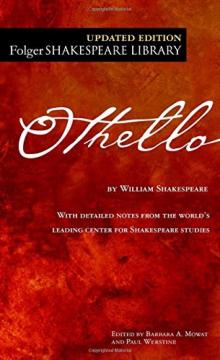 Othello
Othello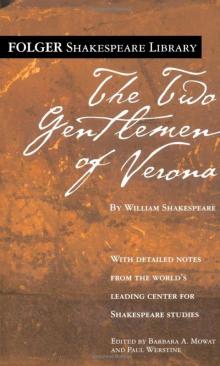 The Two Gentlemen of Verona
The Two Gentlemen of Verona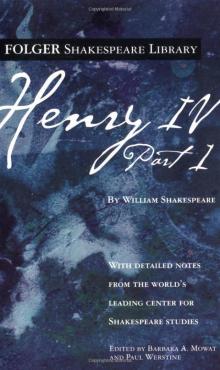 Henry IV, Part 1 (Folger Shakespeare Library)
Henry IV, Part 1 (Folger Shakespeare Library) King John/Henry VIII (Signet Classics)
King John/Henry VIII (Signet Classics)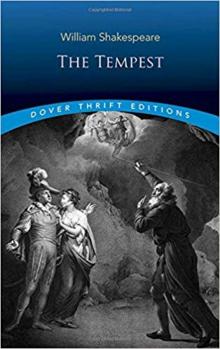 The Tempest
The Tempest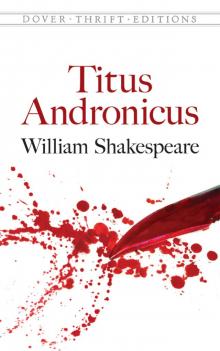 Titus Andronicus (Dover Publications)
Titus Andronicus (Dover Publications)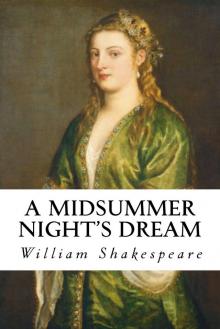 A Midsummer Night's Dream
A Midsummer Night's Dream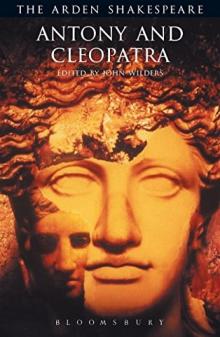 Antony and Cleopatra (Arden Shakespeare: Third Series)
Antony and Cleopatra (Arden Shakespeare: Third Series)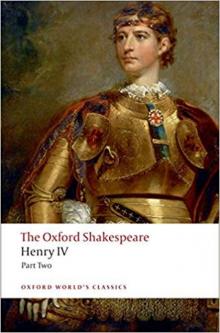 The Oxford Shakespeare: Henry IV, Part 2 (Oxford World's Classics)
The Oxford Shakespeare: Henry IV, Part 2 (Oxford World's Classics)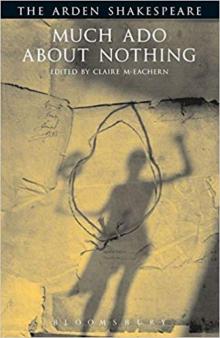 Much Ado About Nothing (Arden Shakespeare: Third Series)
Much Ado About Nothing (Arden Shakespeare: Third Series)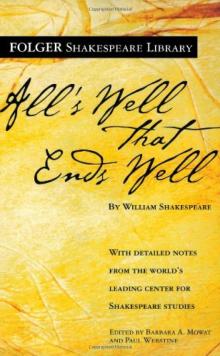 All's Well That Ends Well
All's Well That Ends Well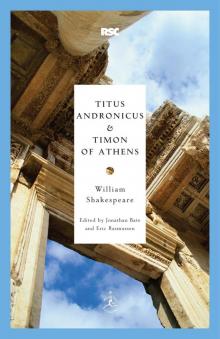 Titus Andronicus & Timon of Athens
Titus Andronicus & Timon of Athens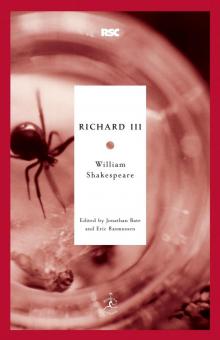 Richard III (Modern Library Classics)
Richard III (Modern Library Classics) Coriolanus
Coriolanus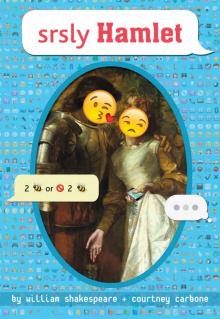 srsly Hamlet (OMG Shakespeare)
srsly Hamlet (OMG Shakespeare) The Merchant of Venice
The Merchant of Venice Richard III
Richard III Richard II
Richard II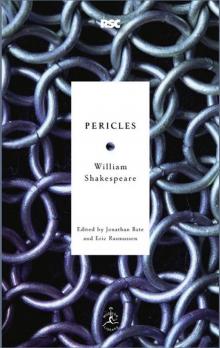 Pericles
Pericles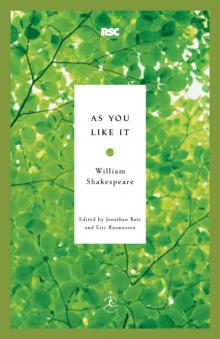 As You Like It
As You Like It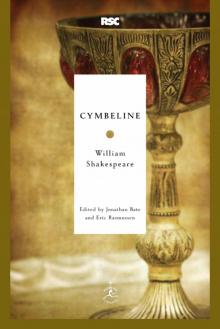 Cymbeline
Cymbeline Alls Wel that ends Well
Alls Wel that ends Well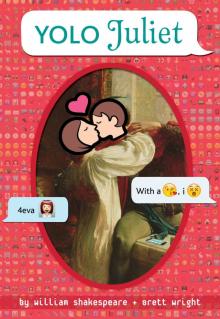 YOLO Juliet
YOLO Juliet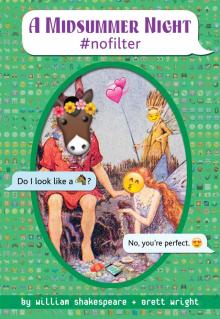 A Midsummer Night #nofilter
A Midsummer Night #nofilter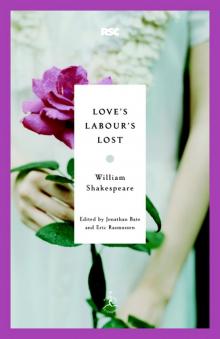 Love's Labour's Lost
Love's Labour's Lost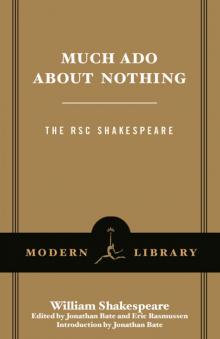 Much Ado About Nothing
Much Ado About Nothing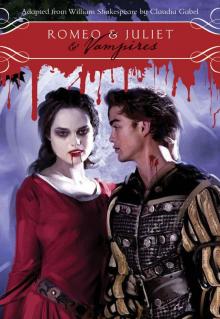 Romeo & Juliet & Vampires
Romeo & Juliet & Vampires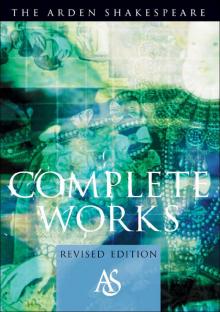 The Arden Shakespeare Complete Works
The Arden Shakespeare Complete Works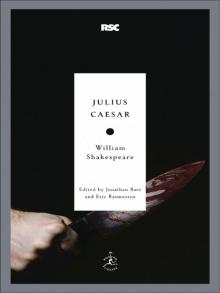 Julius Caesar
Julius Caesar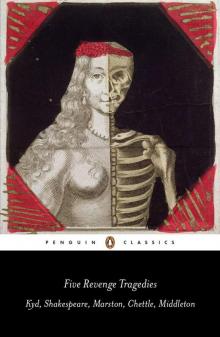 Five Revenge Tragedies: The Spanish Tragedy, Hamlet, Antonio's Revenge, The Tragedy of Hoffman, The Revenger's Tragedy (Penguin Classics)
Five Revenge Tragedies: The Spanish Tragedy, Hamlet, Antonio's Revenge, The Tragedy of Hoffman, The Revenger's Tragedy (Penguin Classics)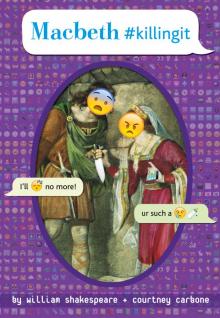 Macbeth #killingit
Macbeth #killingit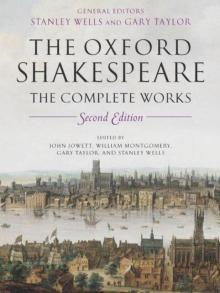 The Oxford Shakespeare: The Complete Works
The Oxford Shakespeare: The Complete Works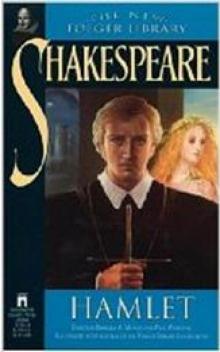 Hamlet, Prince of Denmark (Collins edition)
Hamlet, Prince of Denmark (Collins edition)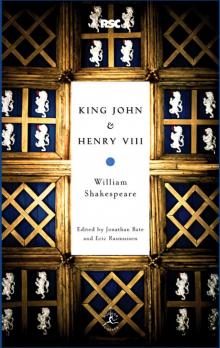 King John & Henry VIII
King John & Henry VIII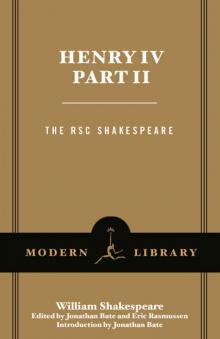 Henry IV, Part 2
Henry IV, Part 2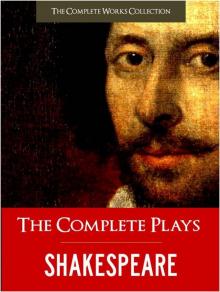 Complete Plays, The
Complete Plays, The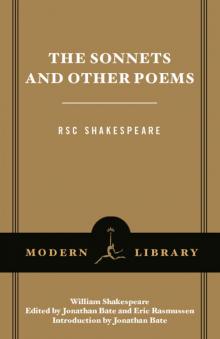 The Sonnets and Other Poems
The Sonnets and Other Poems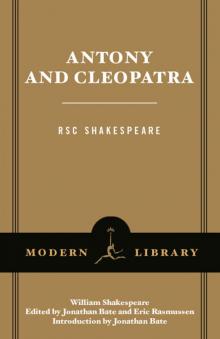 Antony and Cleopatra
Antony and Cleopatra Henry IV, Part 1
Henry IV, Part 1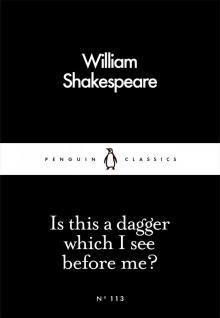 Is This a Dagger Which I See Before Me?
Is This a Dagger Which I See Before Me? The Complete Works of William Shakespeare In Plain and Simple English (Translated)
The Complete Works of William Shakespeare In Plain and Simple English (Translated)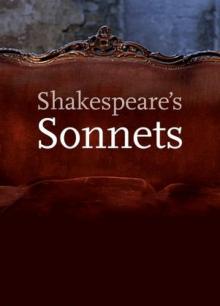 The Sonnets
The Sonnets